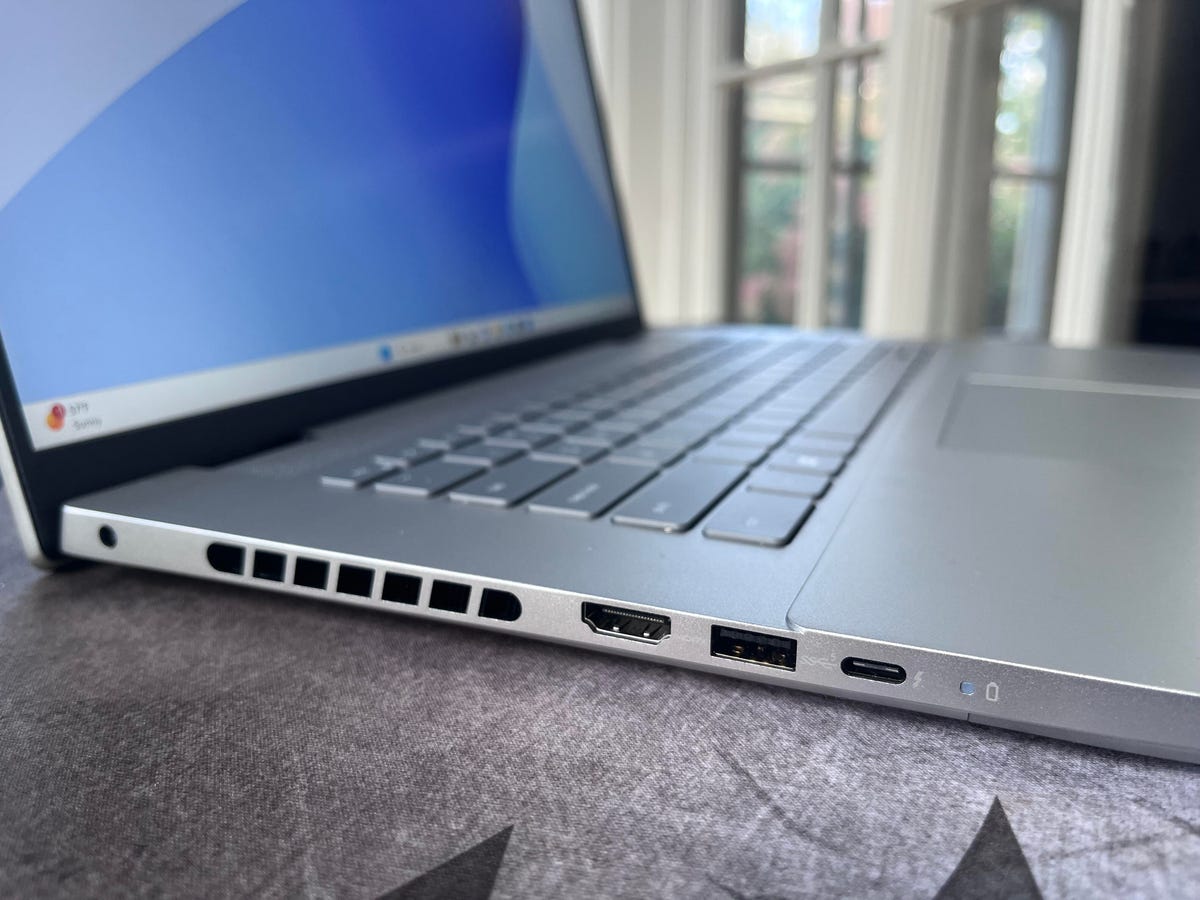The Dell Inspiron 16 Plus remains just out of OLED range. I reviewed the previous version earlier this year and bemoaned the fact that it didn’t provide an OLED or any other display options to upgrade. It’s otherwise a competent content-creation laptop, with a powerful CPU and Nvidia GeForce RTX graphics. And content creators are the very people who would benefit the most from the superior contrast and colors you get from an OLED display.
As with previous versions, Dell offers a lone display option for the Inspiron 16 Plus 7630. Despite featuring fewer pixels than the previous model’s panel, the new display is an improvement. While it dropped a notch in resolution from 3K to 2.5K, the refresh rate has doubled to 120Hz. That’s an important number for anyone thinking about putting its discrete graphics muscle toward gaming. Video creators will also appreciate the smoother motion of the 120Hz panel.
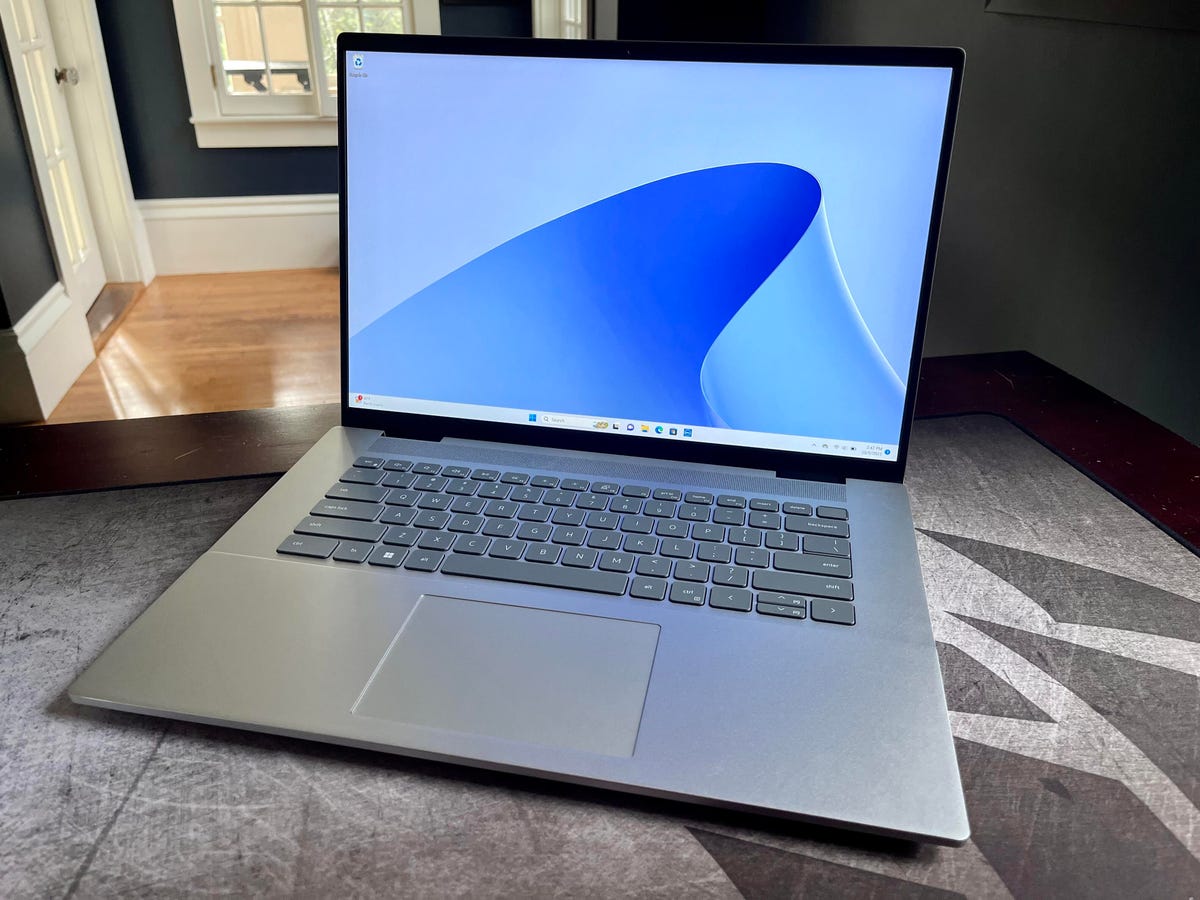
Inside, the Inspiron 16 Plus 7630 received the requisite upgrades to a 13th-gen Intel Core i7 CPU and Nvidia RTX 40-series graphics. The system offers capable application and graphics performance but is only worthy of consideration when Dell’s revolving discounts land on it. I don’t like this configuration at its full price of $1,650, but at a sale price of $1,300, I’m less grouchy about missing out on a better display.
Configuration as tested
| Price as reviewed | $1,300 |
|---|---|
| Display size/resolution | 16-inch 2,560×1,600 IPS LCD |
| CPU | 2.4GHz Intel Core i7-13700H |
| Memory | 16GB DDR5 4,800MHz RAM |
| Graphics | 8GB Nvidia GeForce RTX 4060 |
| Storage | 1TB NVMe SSD |
| Networking | Wi-Fi 6E (802.11ax), Bluetooth |
| Operating system | Windows 11 Home |
Dell offers a dizzying array of configurations for the Inspiron 16 Plus 7630. Pricing starts at $1,200 for a system with a Core i7-13620H processor, 16GB of RAM, integrated Intel graphics and a 1TB SSD. At the time of this writing, however, the base model has a Core i7-13700H CPU and is only $800 with a massive $500 discount. Our test model is $350 off, which brings its price down to $1,300 and features the Core i7-13700H chip and RTX 4060 graphics, which is the highest GPU offered. All models feature the same display, a 16-inch LCD with a 2,560×1,600-pixel resolution that’s rated for 300 nits of brightness. The Inspiron 16 Plus 7630 starts at 899 in the UK and AU$1,999 in Australia.
With its 13th-gen Core i7 H-series CPU and RTX 4060 graphics, our Inspiron 16 Plus 7630 test system had a strong showing in lab testing. It was clearly a step or two ahead of the previous Inspiron 16 Plus 7620 based on a 12th-gen Core i7 H-series chip and RTX 3050 Ti graphics on both our application and 3D graphics tests. Its scores were also competitive with other large-screen, content-creation laptops. It took a step back, however, in battery life. The previous 7620 model lasted over an hour longer on our battery drain test, despite having the same six-cell, 86-watt-hour battery. I attribute the shorter runtime to the faster 120Hz display, which consumes more battery resources than a 60Hz panel.
Under heavy load, our test system did get warm to the touch but never reached a point where it was uncomfortably hot or led to performance degradation. It also operated in near silence, its cooling fans spinning at a whisper.
Now in silver
Dell made a cosmetic shift with the Inspiron 16 Plus 7630, and not for the better to my eyes. Gone is the lovely, subtle green chassis of the previous model. In its place is a pedestrian brushed-silver enclosure. It looks no different in the sea of silver laptops available, although the keys are a muted gray instead of the traditional black. On the whole, there is nothing captivating about the design.
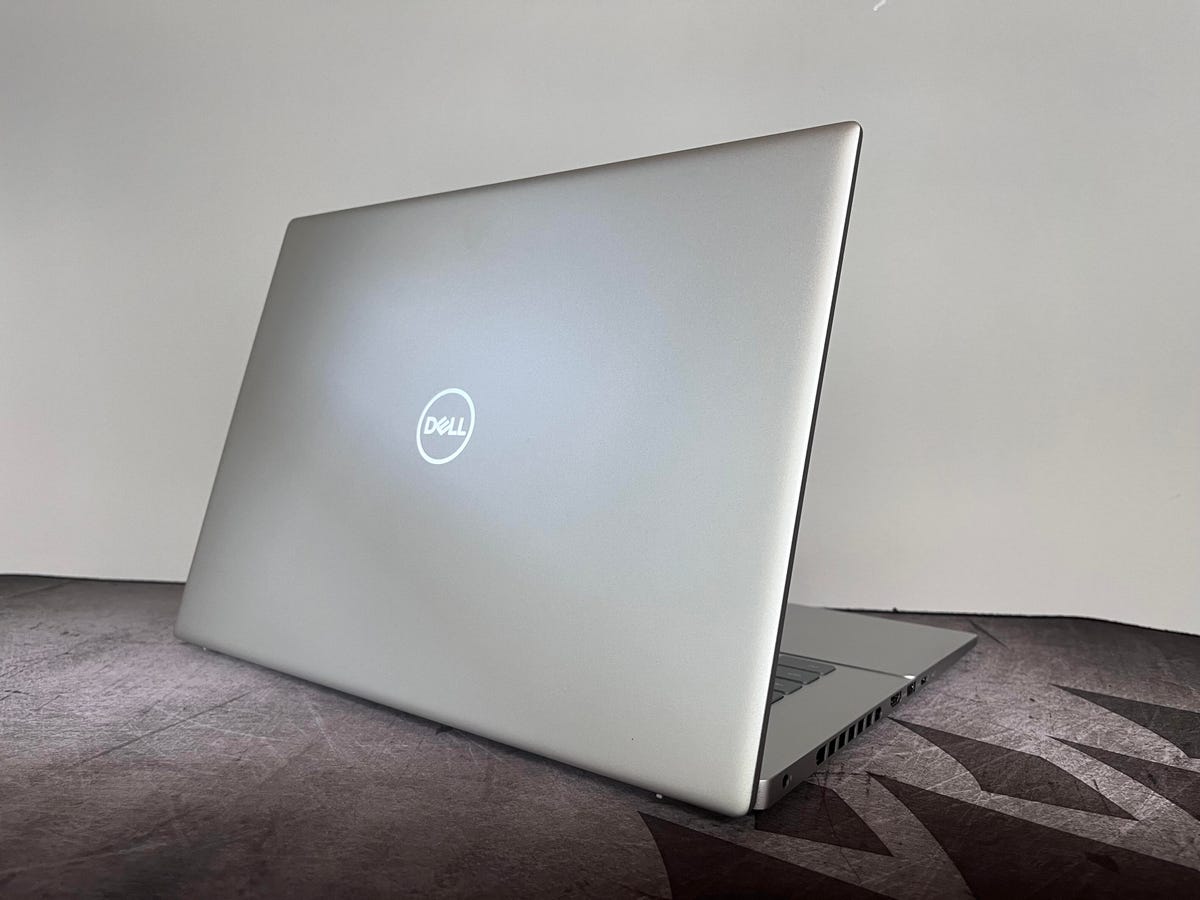
The Inspiron 16 Plus 7630 is also a tad heavier than its predecessor. It weighs 4.8 pounds, which is a few ounces more than the 4.6-pound Inspiron 16 Plus 7620. In the middle of the last two Inspiron 16 Pluses is the 16-inch MacBook Pro at 4.7 pounds. At nearly 5 pounds, these large-screen laptops are better choices for lugging around the house than for daily treks to a coffee shop or the office. Not all large-screen laptops are poor choices in terms of portability. The 16-inch Acer Swift Edge weighs just 2.6 pounds, and the 17-inch LG Gram 17 weighs only 3.2 pounds.
The Plus model means you are getting an all-aluminum chassis. With “non-Plus” Inspirons, you are dealing with plastic shells or a mix of plastic and metal, where the body is made of plastic with perhaps an aluminum lid. With the large expanse that the keyboard deck covers, some flex in the middle beneath the keyboard detracts from the typing experience.
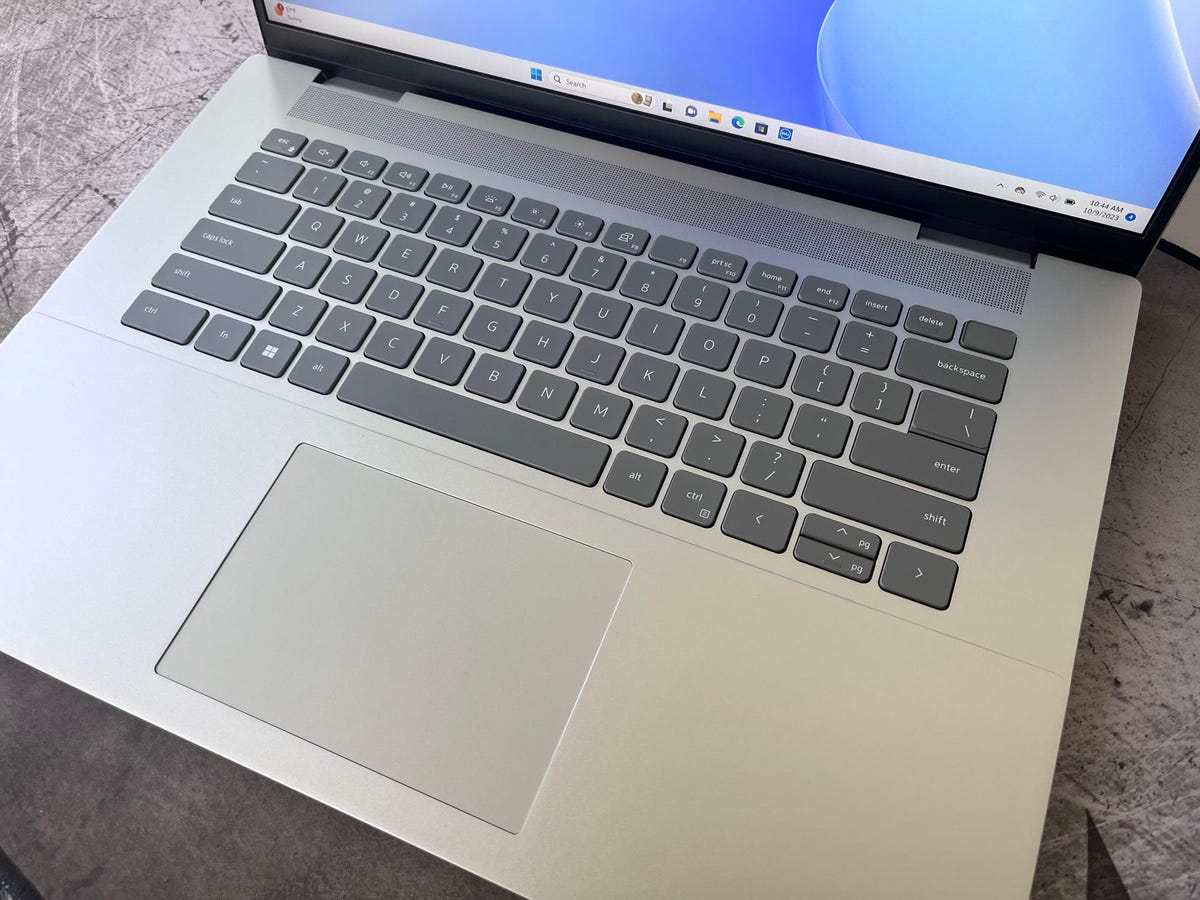
The keys felt springy with shallow travel; I was immediately comfortable typing on the Inspiron 16 Plus 7630, partly because of the lively keys and also because Dell omits a number pad. The keyboard is centered below the display instead of shifted left to accommodate a numpad, so the keys are right where you expect them to be. And there are no shortened keys that might have you hitting the wrong one for days or weeks before your fingers adjust to the placement and size.
The touchpad design has been tweaked, but it still has too firm a click response. The previous model had an invisible border at the top of the touchpad, but the Inspiron 16 Plus 7630’s has the traditional framing of four borders — one on each side. Given the wide wrist rest below the display, I feel the touchpad could be bigger. A 16-inch, 16:10 display is a large swathe across which to move a cursor with an undersized touchpad.
Swifter display
The 16-inch, 16:10 provides a large canvas on which to work or be entertained. Its 2.5K resolution (2,560×1,600 pixels) is down from the previous model’s 3K resolution (3,072×1,920 pixels). Still, the 2.5K resolution suffices for the 16-inch panel; text looks crisp and deeply black as opposed to the fuzzy, gray letters you can get on a 16-inch FHD panel.
While this year’s model forces you to sacrifice in the area of screen resolution, it makes up for it in refresh rate, doubling the standard 60Hz rate to 120Hz for smoother motion for videos and games. You can also enable a dynamic refresh rate to run a smoother 120Hz when needed and 60Hz at other times to conserve battery resources.
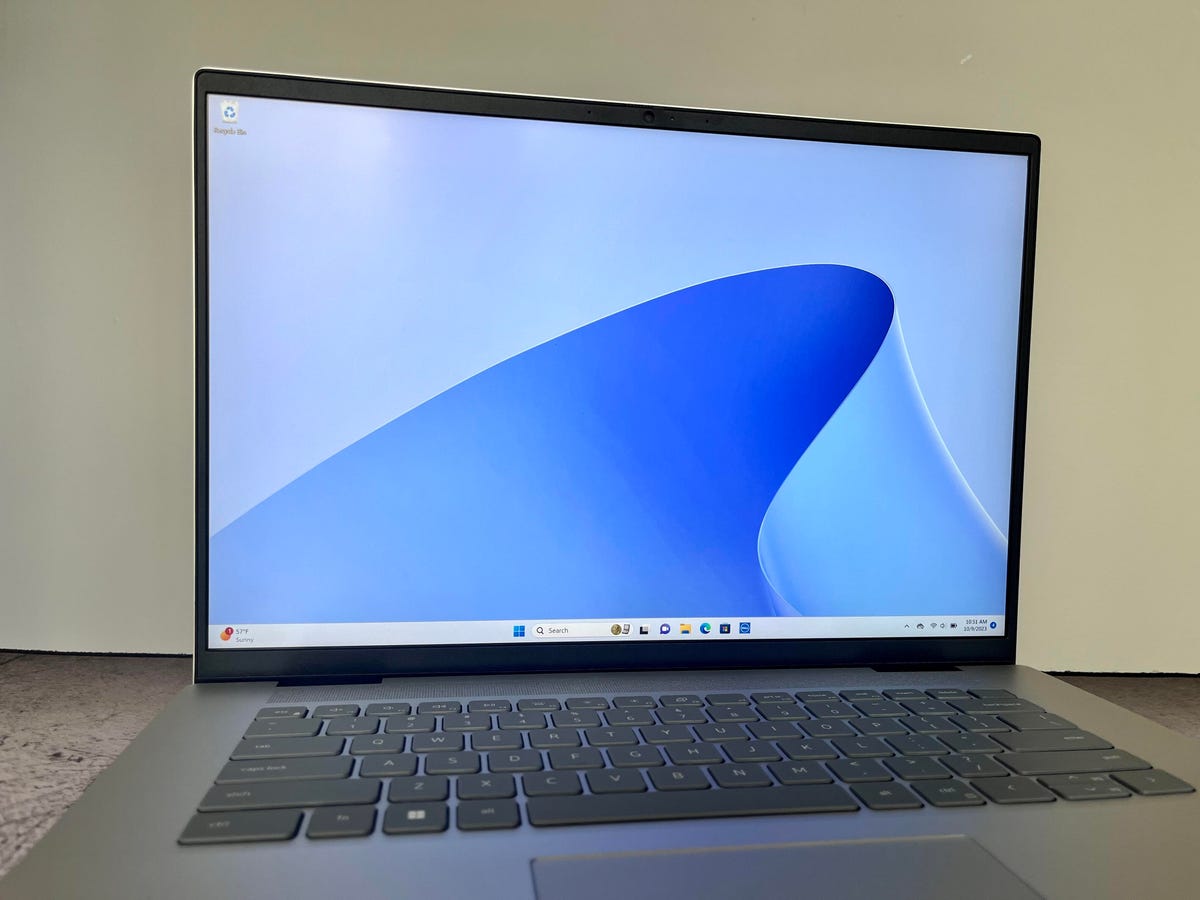
The higher refresh rate is the only positive for content creators. Otherwise, the display is decidedly average. It’s rated for a ho-hum 300 nits and lacks HDR support. I measured the display’s brightness with a lux meter, and it tested at a peak brightness of 380 nits. But the display’s overall performance is still disappointing.
The webcam hits on two items I like to see: a 1080p resolution and a physical privacy shutter. It produced a crisp, properly exposed image with accurate colors and skin tones. It lacks IR capability for facial recognition logins, but a fingerprint sensor is built into the power button for easy and secure logins.
Dell outfits the Inspiron 16 Plus 7630 with four speakers producing fuller sound than the typical stereo set. The low end is lacking, but there’s enough oomph for the sound to fill a small room. For watching shows and movies and YouTube they were fine — dialogue was clear, and sound effects were natural. The lack of bass response, however, limits music playback.
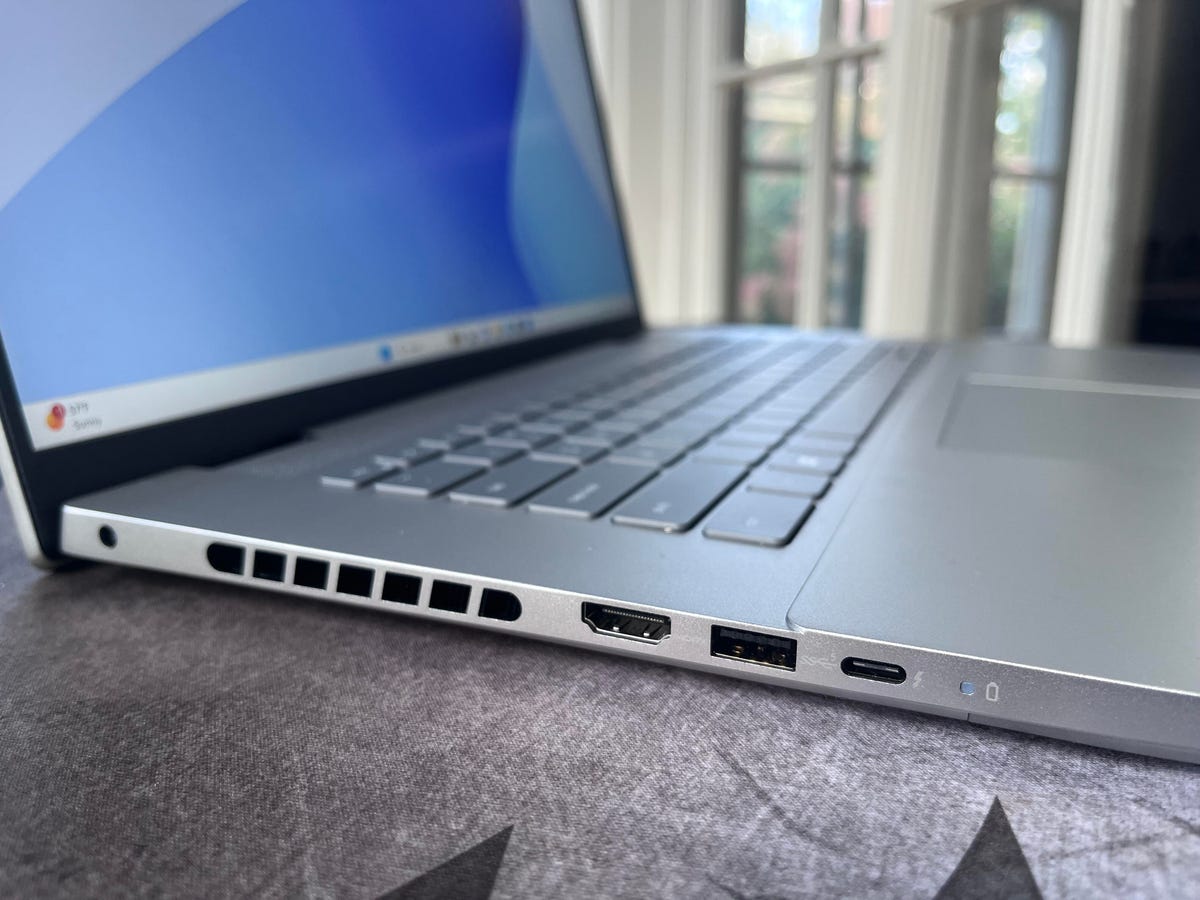
With a large vent on either side, the Inspiron 16 Plus 7630 looks a bit like a gaming laptop. In front of these large vents are three ports. On the left side, you’ll find a USB-C Thunderbolt 4, a USB-A and an HDMI port. On the right is a second USB-A port alongside a combo audio jack and microSD card slot. I’d like to trade one of the USB-A ports for a second USB-C port, but since the lone Thunderbolt 4 port isn’t needed for charging — the laptop uses a barrel connector — I’m more accepting of having only a single Thunderbolt 4 connection. That said, I have no need for a second USB-A port.
One note on the microSD card slot: it’s only on the RTX 4060-based configuration. Oddly, the other models with integrated graphics or lower-end RTX graphics feature a full-sized SD card slot.
Listen, I don’t expect to get both a strong midrange RTX GPU and a large OLED display for our test system’s $1,650 price, but I’d argue getting both items for, say, $2,000 is a better value than getting one or the other for $1,650. And what’s frustrating is that Dell offers RTX graphics with the Inspiron 16 Plus 7630 but no OLED option and then also has the Inspiron 16 two-in-one that offers an OLED option but no RTX graphics. I want to be able to smoosh the two together and come away with a 16-inch content-creation laptop that would rival the Samsung Galaxy Book 3 Ultra, our current pick for content creators in need of a large-screen Windows laptop.
Geekbench 5 (multicore)
Cinebench R23 (multicore)
3DMark Wild Life Extreme Unlimited
Guardians of the Galaxy (High @ 1920 x 1080)
Shadow of the Tomb Raider (Highest @ 1920 x 1080)
Online streaming battery drain test
System configurations
| Dell Inspiron 16 Plus 7630 | Microsoft Windows 11 Home; 2.4GHz Intel Core i7-13700H; 16GB DDR5 4,800MHz RAM; 8GB Nvidia GeForce RTX 4060 graphics; 1TB SSD |
|---|---|
| Dell Inspiron 16 Plus 7620 | Microsoft Windows 11 Home; 2.3GHz Intel Core i7-12700H; 16GB DDR5 4,800MHz RAM; 4GB Nvidia GeForce RTX 3050Ti graphics; 512GB SSD |
| Dell XPS 17 9730 | Microsoft Windows 11 Home; 2.4GHz Intel Core i7-13700H; 32GB DDR5 4,800MHz RAM; 16GB Nvidia GeForce RTX 4070 graphics; 1TB SSD |
| Lenovo Legion Pro 5 | Microsoft Windows 11 Home; 3.6GHz AMD Ryzen 7 7745HX with Radeon Graphics; 16GB DDR5 5,600MHz; 8GB Nvidia GeForce RTX 4070 graphics; 1TB SSD |
| Microsoft Surface Laptop Studio 2 | Microsoft Windows 11 Home; 2.9GHz Intel Core i7-13700H; 64GB DDR5 5,200MHz RAM; 8GB Nvidia GeForce RTX 4060 graphics; 1TB SSD |
| Samsung Galaxy Book 3 Ultra | Microsoft Windows 11 Home; 2.4GHz Intel Core i7-13700H 16GB DDR5 6,000MHz RAM; 6GB Nvidia GeForce RTX 4050 graphics; 1TB SSD |
| Apple MacBook Pro (16-inch, 2023) | Apple MacOS Ventura 13.2; Apple M2 Pro (12 CPU cores, 19 GPU cores); 32GB LPDDR5 RAM; 1TB SSD |
